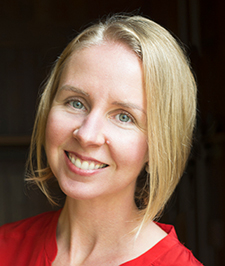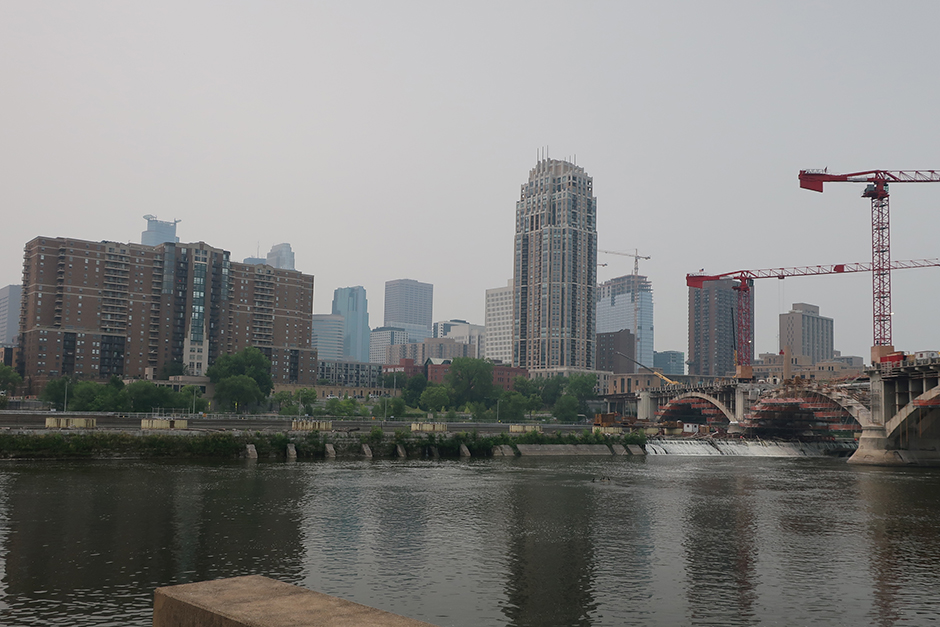What we’ve been experiencing statewide isn’t just a little bit of air pollution. It is a prolonged period of the worst air quality Minnesota has ever experienced. As a nurse specializing in environmental health, I am both deeply concerned for the health of the residents of my state and frustrated by the lack of coordinated statewide and local responses to this slow-moving, smoky health crisis.
Pollution from wildfire smoke, consisting heavily of fine particulate matter (PM 2.5), directly damages our health in the short term. The many hazards include increased risk of heart attack, stroke, and premature death . The long-term effects are less researched, but new studies point to long-term or irreversible lung damage at a minimum. Children, older adults, pregnant women, and people living with chronic illness are particularly vulnerable to these risks. Especially pertinent during the rise of the delta variant is the fact that increased air pollution is also linked with increased risk of death from COVID-19 infection.
As I drove back to St. Paul with my partner and two children from the North Shore on Thursday, July 29, the smoke became increasingly thick and heavy. All of our eyes were burning, my children were coughing, and I had an ominous sense of doom I could not turn off. Living with chronic illness myself, I feel increasingly weak, shaky, and fatigued as this disaster wears on. A neighbor with asthma has used as much medication this summer as she did in all of 2020.
Most concerning of all is the lack of systemic response to support our communities in this event. At the height of the crisis on Thursday night, with an unprecedented air quality index of 233 (“very unhealthy” or purple zone on the AQI), a neighbor posted in my neighborhood Facebook group asking what was going on, as the air was smoky and heavy. Comments on the post showed many neighbors were similarly uninformed of the situation. Why, I ask, is my community largely unaware of the hazards posed by the crisis we are currently experiencing? Why can we mobilize a statewide amber alert when there is a missing child but not send a similar alert when wildfire smoke threatens the health of more than a million children in Minnesota? Why is there no organized collaborative response between the Minnesota Pollution Control Agency and the Minnesota Department of Health to ensure Minnesotans know what to do to minimize their health risks? As of Friday, July 30, the social media accounts of both Gov. Tim Walz and St. Paul Mayor Melvin Carter showed zero mention of the crisis we’ve been living through.
As the climate crisis deepens, wildfires and the droughts that fuel them are becoming more frequent and severe. The current scenario in Minnesota is not an isolated incident. We will face this situation again, and we can prepare a coordinated response that minimizes the health impacts on Minnesotans. We can build a robust infrastructure committed to disaster preparation and response that will serve us through not only wildfire smoke, but other climate-related disasters in Minnesota such as deadly extreme heat events and intense rain storms that overwhelm our stormwater systems, flooding our communities.

[image_caption]Rachel Kerr[/image_caption]
Connected communities are strong communities. Prepared neighborhoods are healthy neighborhoods. Coordinated disaster response will improve Minnesotans’ health now and into the future. While leaders and decision makers must step up and take an active role during crises, every community member has a part to play. The new normal may be frightening, but we can — and will — get through it together.
Rachel Kerr, DNP, RN, is a resident of St. Paul and a registered nurse with a specialty in environmental health. She holds a doctoral degree from the University of Minnesota and currently serves as the environmental health nurse program manager for the Alliance of Nurses for Healthy Environments.
WANT TO ADD YOUR VOICE?
If you’re interested in joining the discussion, add your voice to the Comment section below — or consider writing a letter or a longer-form Community Voices commentary. (For more information about Community Voices, see our Submission Guidelines.)






Nothing new in my neighborhood. Backyard bonfires keep the air hazy all summer long.
As I drove on metro freeways last week the MN DOT message boards all said “Air Quality Alert, Consider Reducing Trips” and certainly the STRIB and local TV reinforced that message. Not sure of what else could be done. Gigantic fans to blow it to Iowa? Or, as every Gopher fan knows, the solution is inherent as “Iowa Sucks”.